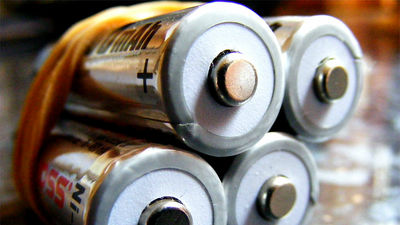A fundamental discovery that may lead to the realization of lithium metal batteries that are safer and more efficient than lithium ion batteries is revealed

Ultrafast deposition of faceted lithium polyhedra by outpacing SEI formation | Nature
https://doi.org/10.1038/s41586-023-06235-w

True shape of lithium revealed for the first time

Revolutionizing Battery Performance: UCLA Reveals True Shape of Lithium for the First Time
Invented in the 1980s, the 'lithium metal battery', which uses metallic lithium and a liquid electrolyte, attracted great expectations as a new technology, and was introduced to the market by being used in batteries for shoulder mobile phones released by NTT.
In contrast to lithium-ion batteries, which store positively charged lithium atoms in carbon cages that cover the electrodes, lithium metal batteries coat the electrodes with metallic lithium. Therefore, lithium metal batteries are theoretically capable of storing approximately twice as much energy as lithium-ion batteries.

Lithium metal is highly reactive with chemicals, and when exposed to air, it corrodes, depositing clumps of lithium called
Until now, explanations about the structure of metallic lithium have been ambiguous, such as 'massive' or 'cylindrical', and this has been an issue in understanding the function and safety of lithium metal batteries. Therefore, a research team led by Yuzan Lee and others at the University of California, Los Angeles conducted research in which lithium atoms were intentionally corroded and their shapes observed.
In the experiment, the research team used four different electrolytes to cause corrosion to metallic lithium. Then, it was found that metallic lithium changed into four different shapes.
At the same time, the research team developed a technology that deposits lithium on the electrode faster than the metallic lithium corrodes by continuing to pass a current through a very small electrode. Then, it turned out that all the lithium atoms in which corrosion did not occur show the shape of a rhombic dodecahedron.

by Tom Garnett
It is expected that the orderly deposition of lithium atoms without entanglement may reduce the risk of ignition and explosion, which was a drawback of lithium metal batteries.
The images below show the rhomboidal dodecahedron-shaped lithium atoms (top) and the irregular shape of metallic lithium (middle and bottom) that appeared as corrosion occurred, which the research team discovered this time. It is a diagram.

``This discovery reveals the original shape of lithium in the absence of corrosion.In the future, research is needed to increase the density of lithium while improving the safety and performance of batteries,'' said Lee. I'm here. ``Further research and development is required to optimally deposit lithium.''
Related Posts:
in Science, Posted by log1r_ut







